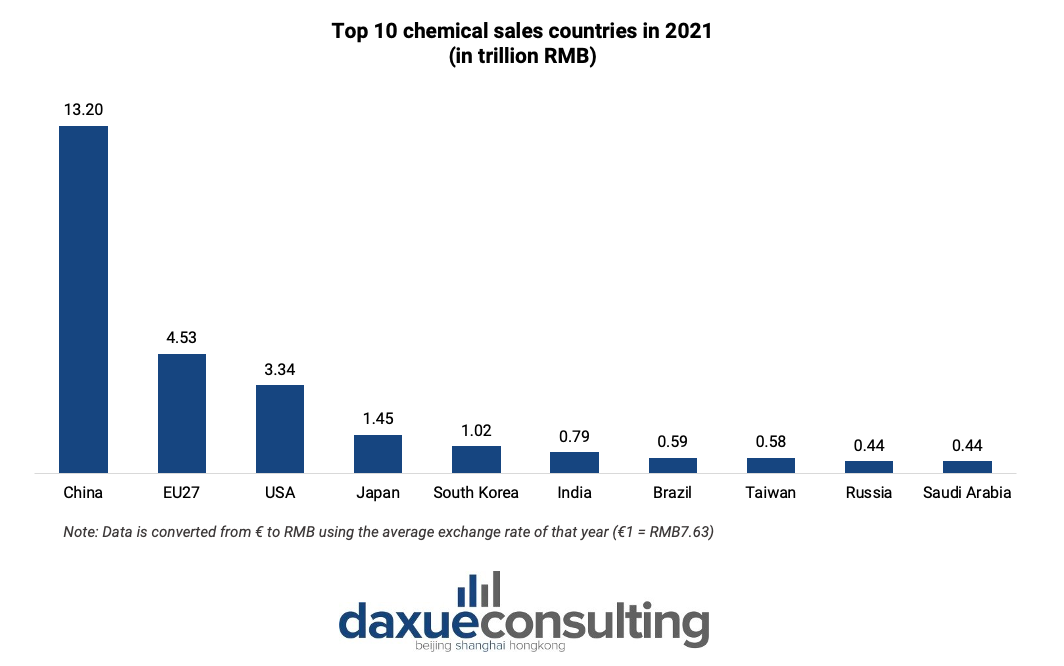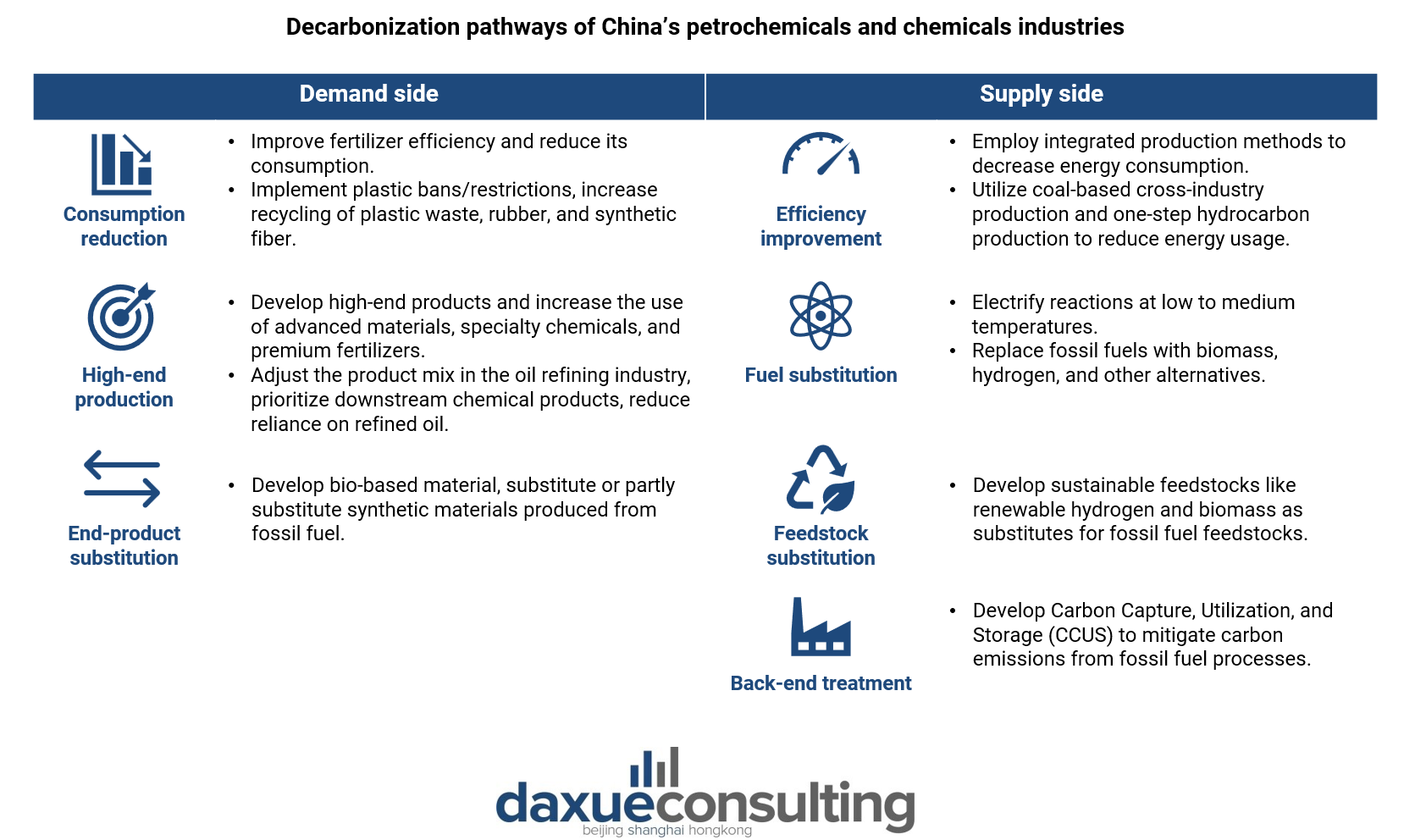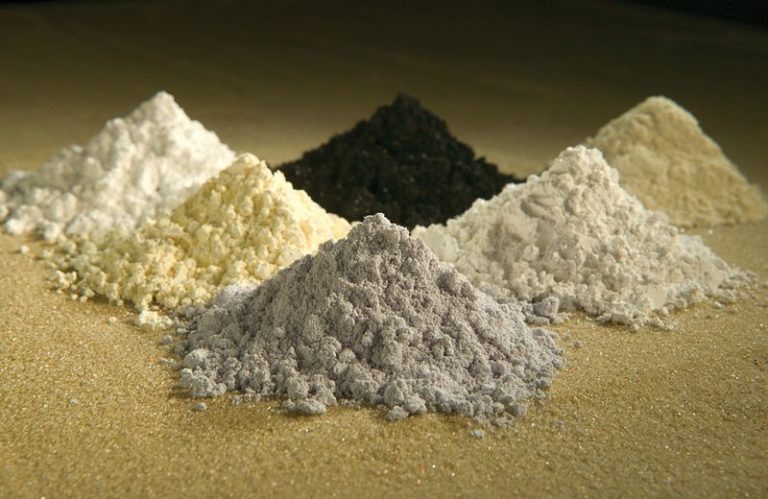China is the world’s largest producer and consumer of chemical products with a substantial international influence. China’s chemical industry is one of the world’s fastest-growing chemical industries in terms of revenue since 2011. The industry is essential to China’s overall economic development and has seen substantial growth and modernization over the past few decades. As the country navigates its zero-carbon goals, assessing the industry’s impact and potential for sustainable practices, innovation, and the adoption of cleaner technologies becomes crucial.
China’s dominance in chemical sales: Leading the global market
Since 2011, China’s chemical industry has consistently maintained its position as the global revenue leader, surpassing other major chemical-producing regions in terms of growth rate. In 2021 alone, the sales volume of the country’s chemical products generated RMB13.20 trillion (USD1.8 trillion), representing 43% of global sales, and solidifying its position as the world’s leading chemical market. China is also the world’s largest purchaser of chemical goods. The German Chemical Industry Association (VCI) estimates that China consumed US$1.7 trillion worth of chemical products in 2019, making up 41.6% of the world’s total.

Understanding product categories in the chemical industry
China’s chemical industry covers a wide range of sectors, including petrochemicals, basic chemicals, fine chemicals, agrochemicals, polymers, and plastics, and covering both upstream feedstock production and downstream product manufacturing. However, it can generally be divided into two major sectors: bulk chemicals and fine chemicals.
Bulk chemicals, or commodity chemicals, are produced and traded in large quantities but typically yield lower profit margins. It is also usually utilized as raw materials (feedstocks) or intermediate components in various industries. Therefore, they are commonly found in the upstream section of the chemical industry supply chain. Examples include olefins and aromatics.
On the other hand, fine chemicals, also known as specialty chemicals or performance chemicals, are produced in smaller quantities with a focus on high purity and specific performance characteristics. They also have higher added value compared to bulk chemicals.
Shifting Chinese consumer demand for specialty chemical products
As China shifts its focus towards consumption-driven growth and a desire for sophisticated goods, the demand for specialty chemicals is poised to experience further growth. The expanding market for high-end personal-care products, for example, will drive the need for advanced specialty surfactants, additives, and fragrances. Chinese consumer trends, including the increasing popularity of online food ordering, also present opportunities for innovative packaging materials like biodegradable polymers.
Additionally, the Chinese government released a strategic initiative in 2015, Made in China 2025, aiming to propel the development of high-tech industries such as aerospace, electronics, electric vehicles (EVs), and batteries. There is also a surging demand for EVs in China, projected to grow at a compound annual rate of 25% by 2030. Furthermore, sectors like high-speed trains and the expanding aerospace industry will drive the demand for coatings and advanced composites. All of these directions are expected to stimulate various end markets, leading to the production of and opening doors for advanced chemical products.
Commitment to carbon neutrality: Implications for China’s chemical industry
In September 2020, China announced its commitment to achieve peak CO2 emissions before 2030 and work towards carbon neutrality by 2060. The country’s zero-emission plan outlines a comprehensive strategy to reduce greenhouse gas emissions and transition towards a more sustainable and low-carbon economy. The plan encompasses various sectors, including the chemical industry, which plays a significant role in China’s carbon emissions profile.
Tighter regulations have spurred innovation and the advancement of green technologies in the chemical industry. Companies are investing in research and development to produce eco-friendly products, lower energy usage, and explore alternative raw materials. This has fostered opportunities in green chemistry, sustainable materials, and renewable energy sectors. However, challenges accompany these developments.
Navigating challenges on the path to carbon neutrality
Firstly, the industry faces hurdles in achieving carbon neutrality due to its significant reliance on coal. This reliance becomes problematic since coal emits a greater amount of carbon compared to other fuels and feedstocks, making decarbonization efforts more challenging.
The relatively young assets in China’s chemical industry present a challenge in transitioning to zero-carbon operations while avoiding stranded assets. Stricter environmental regulations have led to the gradual phasing out of high-emitting facilities, and this trend is expected to continue. The need to adopt cleaner technologies and practices to meet environmental standards requires substantial investments, which can be particularly challenging for small and medium-sized chemical businesses. As a result, these companies may face short-term problems in complying with higher environmental standards and managing associated cost increases.
The impact of stricter environmental regulations goes beyond individual companies. It has prompted a consolidation within the chemical industry, favoring larger and more technologically advanced players. The stringent requirements and higher costs associated with environmental compliance have made it difficult for smaller and less environmentally compliant firms to survive. Consequently, the industry has witnessed a shift towards companies with greater financial resources and technological capabilities that can afford the necessary investments in sustainable practices.
In order to thrive in China’s chemical industry, foreign businesses must possess a deep understanding of the local market dynamics. To succeed and navigate the Chinese market effectively, it is essential to gain insights into customer needs, understand the competitive landscape, and stay updated on regulatory requirements. Having a strong understanding of these critical factors is vital for achieving success and addressing the unique challenges and opportunities in the market.

Capturing the market: Foreign companies seizing opportunities in China’s chemical sector
Unprecedented growth, intense competition, and a fragmented landscape have characterized China’s chemical sector in the past two decades. While the overall demand for chemical products continues to rise due to economic growth and improved quality of life, the industry faces challenges of overcapacity in low-end products and under-capacity in high-end products. However, these challenges present a unique opportunity for foreign companies to enter the Chinese market.
The increasing demand for specialty chemicals, advanced materials, and innovative products creates a favorable environment for foreign companies to bring their expertise and advanced technologies into China. By focusing on specialized areas and offering high-quality, value-added products, foreign companies can address the specific needs of Chinese consumers and industries. Additionally, China’s reliance on imports for high-end chemical products provides a gateway for foreign companies with expertise in producing such products to establish a strong presence in the market.
What to know about China’s journey to carbon neutrality: Challenges and opportunities for the chemical sector
- China is the world’s largest producer and consumer of chemical products, leading in global chemical sales since 2011.
- China has committed to carbon neutrality by 2060, leading to tighter regulations and a push for innovation and green technologies in the chemical industry.
- Challenges in achieving carbon neutrality include the industry’s reliance on coal as a feedstock and the need for substantial investments in cleaner technologies and practices. Additionally, stricter environmental regulations have prompted consolidation in the chemical industry, favoring larger and more technologically advanced players.
- The Chinese government’s strategic initiative, Made in China 2025, is spurring the development of high-tech industries, creating opportunities for advanced chemical products in sectors like aerospace, electronics, electric vehicles, and batteries. Shifting consumer demand in China is also driving growth in specialty chemical products, such as advanced surfactants, additives, and biodegradable polymers.
- Foreign companies have an opportunity to enter China’s chemical market by focusing on specialized areas and offering high-quality, value-added products that meet the specific needs of Chinese consumers and industries.
Author: Regina Sukwanto
Read about young Chinese consumer trends






